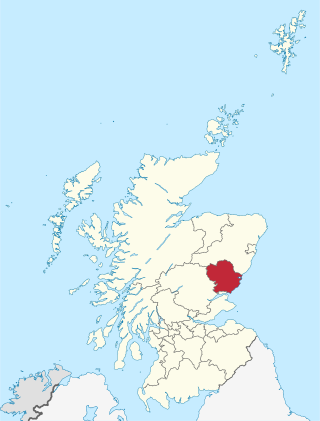
Angus is one of the 32 local government council areas of Scotland, a registration county and a lieutenancy area. The council area borders Aberdeenshire, Dundee City and Perth and Kinross. Main industries include agriculture and fishing. Global pharmaceuticals company GSK has a significant presence in Montrose in the east of the county.
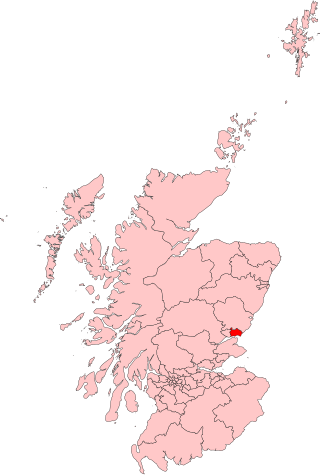
Dundee East is a constituency of the House of Commons of the Parliament of the United Kingdom. Created for the 1950 general election, it elects one Member of Parliament (MP) by the first-past-the-post voting system.

Dundee West is a constituency of the House of Commons of the Parliament of the United Kingdom. It elects one Member of Parliament (MP) by the first-past-the-post voting system.

Angus is a county constituency of the House of Commons of the Parliament of the United Kingdom. It elects one Member of Parliament (MP) by the first-past-the-post voting system. It is currently represented by Dave Doogan of the Scottish National Party who has been the MP since 2019.

Aberdeen North is a burgh constituency of the House of Commons of the Parliament of the United Kingdom and it elects one Member of Parliament (MP) by the first past the post system of election. It was first used in the 1885 general election, but has undergone various boundary changes since that date.
Forfarshire was a Scottish county constituency represented in the House of Commons of Great Britain from 1708 until 1800, and then in the House of Commons of the United Kingdom until 1950.
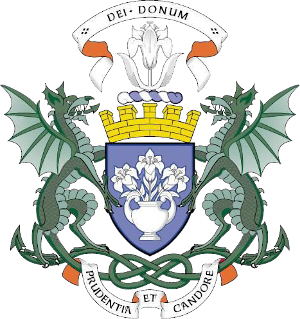
Dundee City Council is the local government authority for the Dundee City council area. It was created in 1996 under the Local Government etc. (Scotland) Act 1994.

Angus MacDonald JP DL is a former Scottish National Party (SNP) politician. He was the Member of the Scottish Parliament (MSP) for Falkirk East from 2011 to 2021.
Elections to Angus Council were held on 3 May 2007 the same day as the other Scottish local government elections and the Scottish Parliament general election. The election was the first one using 8 new wards created as a result of the Local Governance (Scotland) Act 2004, each ward will elect three or four councillors using the single transferable vote system a form of proportional representation. The new wards replace 29 single-member wards which used the plurality system of election.

Banffshire and Buchan Coast is a constituency of the Scottish Parliament (Holyrood) covering parts of the council areas of Aberdeenshire and Moray. It elects one Member of the Scottish Parliament (MSP) by the first past the post method of election. It is one also of ten constituencies in the North East Scotland electoral region, which elects seven additional members, in addition to ten constituency MSPs, to produce a form of proportional representation for the region as a whole.

Angus North and Mearns is a constituency of the Scottish Parliament (Holyrood) covering parts of the council areas of Angus and Aberdeenshire. It elects one Member of the Scottish Parliament (MSP) by the first past the post method of election. It is one of ten constituencies in the North East Scotland electoral region, which elects seven additional members, in addition to the ten constituency MSPs, to produce a form of proportional representation for the region as a whole.

Angus South is a constituency of the Scottish Parliament (Holyrood) covering part of the council area of Angus. It elects one Member of the Scottish Parliament (MSP) by the first past the post method of election. In addition, it is one of ten constituencies in the North East Scotland electoral region, which elects seven additional members, in addition to the ten constituency MSPs, to produce a form of proportional representation for the region as a whole.

Aberdeenshire East is a constituency of the Scottish Parliament (Holyrood) covering part of the council area of Aberdeenshire. It elects one Member of the Scottish Parliament (MSP) by the first past the post method of election. It is also one of ten constituencies in the North East Scotland electoral region, which elects seven additional members, in addition to the ten constituency MSPs, to produce a form of proportional representation for the region as a whole.

Elections to Angus Council were held on 3 May 2012 the same day as the other Scottish local government elections. The election used the eight wards, created as a result of the Local Governance (Scotland) Act 2004, with each ward electing three or four councillors using the single transferable vote system form of proportional representation, with 29 Councillors being elected.
The 1974 Angus District Council election took place on the 8 May 1974 to elect members of Angus District Council, as part of that years Scottish local elections.
The 1980 Angus District Council election took place on the 1 May 1980 to elect members of Angus District Council, as part of that year's Scottish local elections.
The 1984 Angus District Council election took place on the 1 May 1984 to elect members of Angus District Council, as part of that year's Scottish local elections. They were fought on revised boundaries, with 21 seats down from 22.
The 1988 Angus District Council election took place on the 5 May 1988 to elect members of Angus District Council, as part of that year's Scottish local elections.
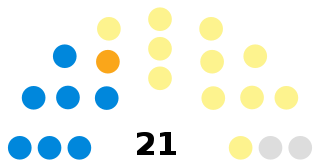
The 1992 Angus District Council election took place on the 7 May 1992 to elect members of Angus District Council, as part of that year's Scottish local elections.
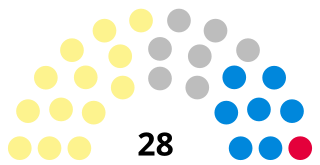
Elections to Angus Council took place on 5 May 2022, the same day as the 31 other Scottish local government elections. As with other Scottish council elections, it was held using single transferable vote (STV) – a form of proportional representation – in which multiple candidates are elected in each ward and voters rank candidates in order of preference.












